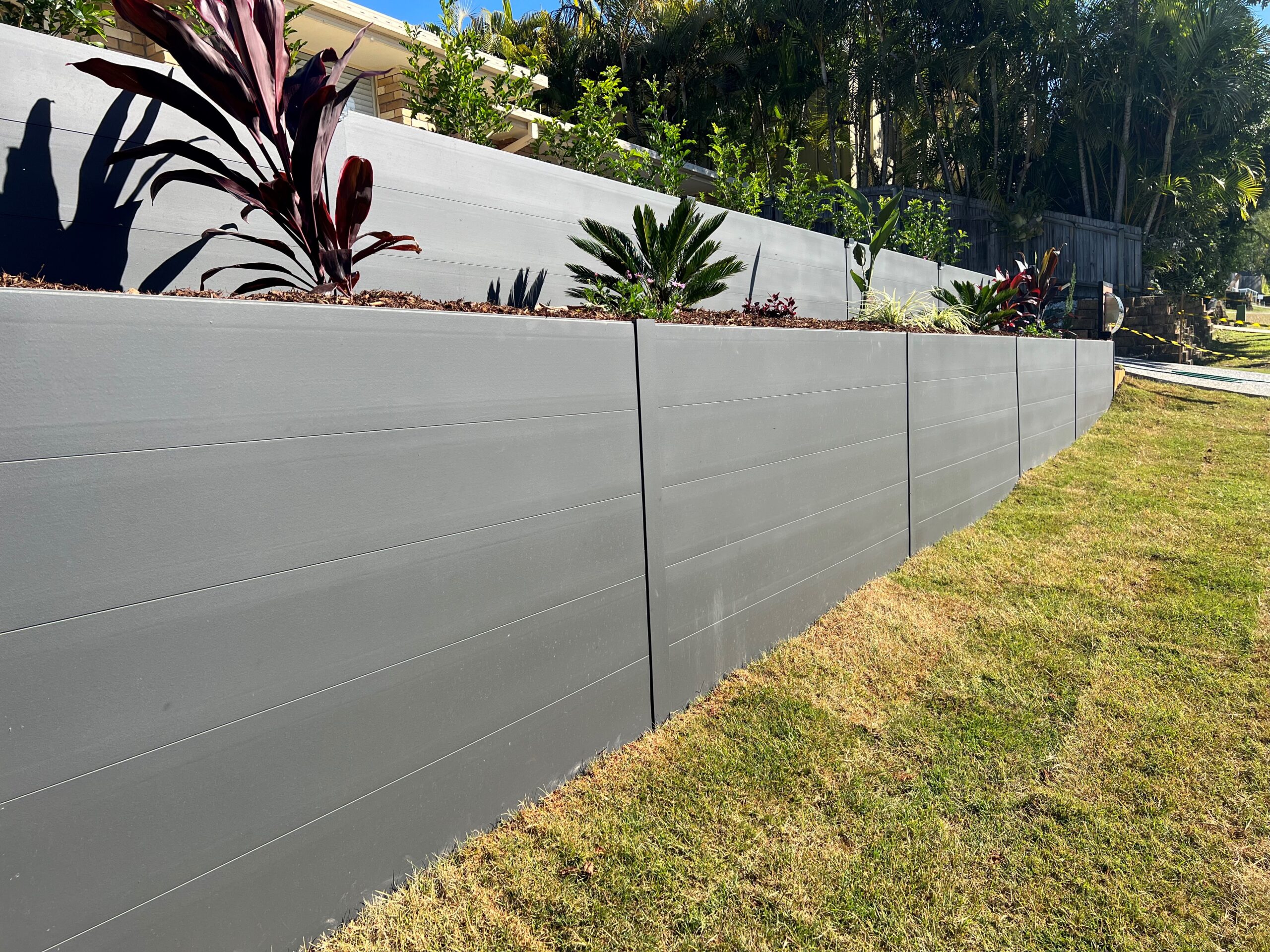Maintaining Wall Surfaces Sunshine Coast: Ingenious Solutions for Disintegration Control
Maintaining Wall Surfaces Sunshine Coast: Ingenious Solutions for Disintegration Control
Blog Article
Enhancing Building Stability: The Role of Retaining Walls in Dirt Retention and Disintegration Control
Maintaining wall surfaces stand as silent guardians, playing an important duty in soil retention and disintegration control. By exploring the nuances of various types, layout factors to consider, construction strategies, and upkeep ideas associated with retaining walls, a deeper understanding of their essential function in enhancing residential property stability arises.
Significance of Retaining Walls in Security
Keeping wall surfaces play a vital duty in holding back dirt, avoiding disintegration, and developing level surfaces in sloped areas. By giving structural assistance, preserving walls aid to redistribute side pressure created by dirt, avoiding landslides and slippage.
Maintaining walls are especially crucial in uneven or uneven surfaces where soil erosion is a common occurrence. Without ample support, dirt disintegration can lead to the destruction of landscapes, compromising the integrity of structures and posturing dangers to citizens. Keeping walls serve as barriers, maintaining the dirt and preventing it from changing downhill throughout heavy rainfall or various other ecological stress factors.
Furthermore, preserving wall surfaces offer lasting benefits by minimizing upkeep prices associated with soil disintegration and land instability. By buying well-designed keeping wall surfaces, homeowner can ensure the long life and sustainability of their landscapes while promoting a aesthetically enticing and safe atmosphere.

Kinds Of Retaining Walls for Erosion Control
Gravity retaining walls are sturdy structures that depend on their weight to resist the pressure of the soil behind them. Cantilever retaining walls, on the other hand, are created with a thicker base and utilize a bar arm to withstand the dirt pressure.
For taller walls or where room is a restriction, anchored maintaining walls are often used. When choosing the proper kind of preserving wall for erosion control, variables such as soil make-up, wall elevation, and site problems should be thoroughly taken into consideration to make certain durable security and effectiveness.
Layout Factors To Consider for Dirt Retention
Incorporating the concepts of architectural engineering and ecological sustainability is crucial when thinking about layout elements for efficient soil retention options. When making for dirt retention, it is vital to evaluate the specific requirements of the site, including dirt make-up, water drain patterns, and incline security. The height and place of the keeping wall surface are crucial elements that influence the total layout. Engineers must likewise consider the pressure put in by the maintained soil and possible lateral lots to make certain the framework's security over time.
In addition, the material option for the preserving wall surface is crucial in improving long life and capability. Concrete, lumber, gabion baskets, and all-natural rock are usual materials used in preserving wall surface building and construction, each with its one-of-a-kind advantages and considerations. Appropriate drainage mechanisms, such as weep holes and French drains pipes, should be integrated into the style to avoid water build-up behind the wall surface, which can lead to structural failure and disintegration.
Building And Construction Strategies for Retaining Walls
When applying layout factors to consider for effective soil retention, the construction strategies for preserving wall surfaces play a crucial role in making sure architectural honesty and long-lasting security. One usual strategy is the gravity wall, which depends on the weight and mass of the wall itself to withstand the pressure of the retained dirt.
One more widely utilized building and construction method is the cantilevered wall, which utilizes a concrete piece foundation that extends in reverse into the maintained dirt. This design provides additional stability and is ideal for tool to high retaining wall surfaces. For taller frameworks, enhanced soil strategies such as making use of geogrids or dirt nails can be employed to improve the wall's stamina and stability.

Maintenance Tips for Building Security
To make sure lasting residential or commercial property security, regular maintenance techniques are important for preserving the stability of avoiding and retaining wall surfaces erosion problems. Inspecting retaining walls regularly is essential to identify any indicators of damage, such as cracks, bulging, or leaning. Any type of problems should be attended to quickly to stop further degeneration. click for more Cleaning up the surface of the preserving wall surfaces can additionally aid maintain their structural stability by eliminating dust, debris, and vegetation that could weaken the wall surface gradually (Retaining Walls Sunshine Coast).
In addition to aesthetic assessments and cleaning, it is necessary to check the water drainage systems related to the retaining walls. Guaranteeing that drains are clear of obstructions and functioning appropriately can protect against water build-up behind the wall surfaces, which can lead to pressure and possible failure. Correctly functioning drain systems are important for handling water circulation and decreasing the threat of erosion.
Consistently checking and maintaining retaining wall surfaces according to these ideas can expand their life-span and add to the general stability of the property.
Verdict
In conclusion, maintaining wall surfaces play an important role in enhancing property security by avoiding dirt erosion and preserving soil in location. Regular maintenance of retaining walls is crucial to guarantee long-term security and security against erosion.
For taller walls or where room is a constraint, secured retaining walls are typically employed. These walls use cable televisions or strips that are anchored right into the dirt or rock behind the wall to supply added support. When choosing the appropriate type of keeping wall for erosion control, elements such as soil structure, wall elevation, and site problems i thought about this have to be very carefully thought about to guarantee resilient stability and performance.
One common technique is the gravity wall surface, which relies on the weight and mass of the wall surface itself to stand up to the pressure of the maintained soil. Cleansing the surface of the maintaining walls can likewise help preserve their structural integrity by removing dirt, particles, and plants that might damage the wall over time.
Report this page